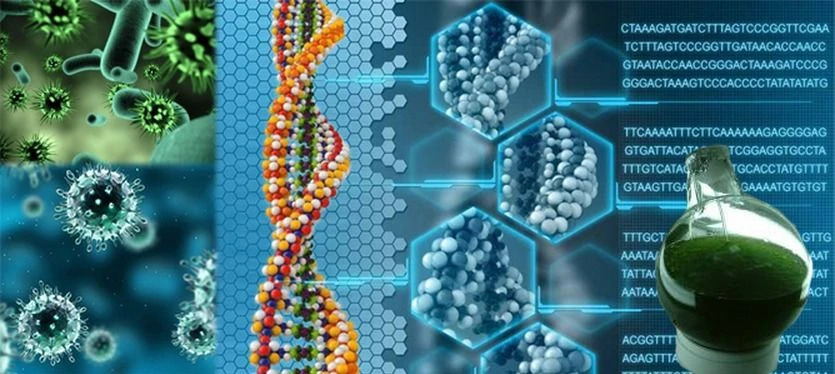
Introduction
The landscape of biological sciences is undergoing a seismic shift, driven by rapid technological advancements, global challenges such as climate change and pandemics, and the ever-growing demand for interdisciplinary approaches to complex biological problems. As we navigate through the 21st century, traditional biology education is evolving rapidly, giving rise to innovative and multidisciplinary degree programs that reflect the changing demands of science, industry, and society.
Emerging degree programs in biological sciences are not only reshaping how we teach and learn but are also redefining career pathways for students. These programs integrate cutting-edge tools such as artificial intelligence (AI), CRISPR gene editing, bioinformatics, systems biology, synthetic biology, and environmental genomics, preparing graduates to tackle real-world issues with a futuristic outlook.
This article explores the future of biological sciences through the lens of emerging degree programs. We examine their structure, content, relevance, and potential to revolutionize both academia and industry. By analyzing current trends and projecting future developments, we aim to provide a comprehensive overview of how tomorrow’s biologists are being trained today.
I. The Evolution of Biological Education
Historically, undergraduate and graduate degrees in biology emphasized foundational knowledge in areas like genetics, cell biology, ecology, and physiology. While these subjects remain essential, they are now complemented—and often surpassed in importance—by competencies in computational biology, data analysis, and cross-disciplinary collaboration.
Several forces have propelled this transformation:
-
Technological Advancements: Innovations such as high-throughput sequencing, cryo-electron microscopy, and spatial transcriptomics have expanded the scope of biological inquiry.
-
Big Data and Bioinformatics: The biological sciences have become increasingly data-driven. Understanding genomic sequences, protein structures, and metabolic pathways requires robust computational skills.
-
Interdisciplinary Integration: Biology no longer operates in silos. Fields like neuroscience now intersect with engineering (brain-machine interfaces), physics (single-molecule techniques), and computer science (machine learning for diagnostics).
-
Global Challenges: Issues like climate change, food security, and personalized medicine demand holistic solutions that transcend traditional disciplinary boundaries.
In response to these factors, universities worldwide are developing new curricula aimed at producing agile thinkers equipped to lead scientific innovation in the decades to come.
II. Emerging Degree Programs in Focus
- Synthetic Biology
Synthetic biology involves designing and constructing new biological parts, devices, and systems not found in nature. Undergraduate and graduate programs in this field blend molecular biology, chemistry, engineering, and computer science.
Key course topics include:
- DNA synthesis and genome editing
- Metabolic pathway engineering
- Biodesign automation
- Regulatory and ethical considerations
Students engage in hands-on projects where they build biological circuits, engineer microbes for bioremediation, or synthesize novel biomolecules. Institutions like MIT, Harvard, and UC Berkeley offer pioneering tracks in synthetic biology, often in collaboration with engineering faculties.
Career paths include biotechnology R&D, pharmaceutical innovation, bioentrepreneurship, and academic research.
- Computational Biology and Bioinformatics
As biological datasets grow exponentially in size and complexity, there is a rising demand for professionals who can interpret and analyze this data. Computational biology applies mathematical modeling and computer simulations to understand biological systems, while bioinformatics focuses more on algorithm development and database management.
Core subjects include:
- Algorithms for sequence alignment
- Structural bioinformatics
- Machine learning applications in biology
- Genomic data analysis
Graduates are equipped to work in drug discovery, epidemiology modeling, personalized medicine, and systems biology. Top schools such as Stanford, Carnegie Mellon, and the University of Edinburgh have robust programs that attract students from diverse quantitative backgrounds, including mathematics, physics, and computer science.
-
Genetic Engineering and Genome Editing
Driven largely by CRISPR-Cas9 technology, genetic engineering programs focus on precise manipulation of DNA to alter organismal traits. These programs cover both the technical and ethical dimensions of genome editing.
Curriculum highlights:
- Gene knockout and knock-in techniques
- CRISPR optimization strategies
- Epigenome editing
- Germline vs somatic editing debates
Hands-on labs allow students to perform genome modifications in model organisms such as E. coli, yeast, zebrafish, and mice. Career prospects span agriculture (GMO development), therapeutics (gene therapy), and academia.
-
Ecological and Environmental Genomics
These programs investigate how organisms interact with their environments at a molecular level. They combine traditional ecology with genomic tools to address conservation biology, climate adaptation, and ecosystem services.
Coursework includes:
- Population genomics
- Metagenomics
- Environmental DNA (eDNA) analysis
- Conservation genetics
Students learn to assess biodiversity, monitor endangered species, and study microbial communities in natural habitats. These programs are particularly relevant amid growing concerns about biodiversity loss and climate resilience.
Universities such as UC Davis, Arizona State University, and the University of Copenhagen offer interdisciplinary tracks blending molecular biology with environmental science.
- Biomedical Engineering and Biodesign
Biomedical engineering sits at the intersection of engineering principles and biological systems. Modern iterations of this field emphasize translational research—bringing scientific discoveries from bench to bedside.
Specializations include:
- Tissue engineering and regenerative medicine
- Medical imaging technologies
- Neural engineering
- Biomedical device development
Programs often include co-op opportunities, design challenges, and close collaboration with hospitals and medical schools. Graduates are in high demand in medical technology companies, startups, and clinical research organizations.
- Neurobiology and Brain-Machine Interfaces
Advances in neurotechnology have given rise to degree programs focused on understanding the brain and developing brain-computer interfaces (BCIs). These programs integrate neuroscience, electrical engineering, materials science, and AI.
Key topics:
- Neural coding and signal processing
- Optogenetics
- BCI device development
- Cognitive neuroscience
With applications ranging from prosthetics to virtual reality, graduates find roles in rehabilitation engineering, neuroprosthetics firms, and cognitive computing labs.
- Systems Biology and Network Medicine
Rather than studying individual components, systems biology adopts a holistic approach to understand how biological networks function as a whole. This perspective is especially useful in deciphering complex diseases like cancer and diabetes.
Core concepts:
- Mathematical modeling of biological systems
- Network theory in biology
- Systems pharmacology
- Multi-omics data integration
Students use computational models to predict cellular responses and identify therapeutic targets. These programs are ideal for those interested in both theoretical and applied aspects of biology.
- Bioentrepreneurship and Technology Transfer
Not all biology graduates pursue research careers. An increasing number opt to launch biotech startups or work in tech transfer offices to commercialize academic innovations. Bioentrepreneurship programs fill this niche by combining science with business acumen.
Course offerings:
- Startup formation and venture capital
- Intellectual property law
- Regulatory affairs in biotech
- Marketing and scaling scientific products
These programs are offered jointly by life sciences and business schools, ensuring graduates understand both the science and the marketplace.
III. Pedagogical Innovations Driving Change
The future of biological education isn’t just about new subjects—it’s also about how these subjects are taught. Several pedagogical shifts are enhancing student engagement and outcomes:
- Project-Based Learning (PBL)
Rather than rote memorization, students tackle real-world problems through collaborative projects. For instance, a synthetic biology class might design bacteria capable of detecting heavy metals in water sources.
- Flipped Classrooms
Lectures are delivered online, allowing classroom time to be used for interactive discussions, lab work, or peer teaching. This model fosters deeper understanding and critical thinking.
- Virtual and Augmented Reality (VR/AR)
Complex biological processes such as protein folding or cellular respiration are better understood through immersive simulations. VR anatomy labs and AR-based molecular viewers enrich the learning experience.
- Microcredentials and Online Modules
To accommodate non-traditional learners, universities now offer stackable credentials, MOOCs (Massive Open Online Courses), and certificate programs in niche areas like bioinformatics or lab techniques.
- Industry Collaboration and Internships
Partnerships with biotech firms, pharmaceutical companies, and government labs ensure students gain practical experience and build professional networks early in their careers.
IV. Societal Impact and Ethical Considerations
As biological sciences advance, so do ethical dilemmas. Emerging degree programs increasingly incorporate training in bioethics, responsible conduct of research, and science communication.
Topics covered include:
- Genetic privacy and discrimination
- Dual-use research concerns
- Equitable access to biotechnologies
- Environmental impact assessments
By fostering a culture of responsibility and inclusivity, these programs prepare scientists who are not only technically proficient but also socially conscious.
V. Career Prospects and Industry Trends
Graduates of emerging biological sciences programs enjoy diverse career options across sectors:
- Biotechnology and Pharmaceuticals: R&D, quality assurance, regulatory affairs.
- Healthcare and Diagnostics: Personalized medicine, genetic counseling, medical device development.
- Agriculture and Food Security: GMO development, sustainable farming practices.
- Environmental Sector: Conservation biology, pollution monitoring, climate resilience planning.
- Data Science and AI: Bioinformatics, computational modeling, health-tech innovation.
- Academia and Government: Research leadership, policy development, science diplomacy.
Moreover, the COVID-19 pandemic underscored the critical role of biological scientists in public health, accelerating job growth and investment in life sciences sectors globally.
VI. Challenges and Future Directions
Despite promising advancements, several challenges remain:
- Funding Constraints: Interdisciplinary programs often struggle to secure stable funding due to their novel nature.
- Faculty Shortages: Few educators are trained to teach across traditional disciplinary boundaries.
- Equity and Access: Underserved communities may lack access to cutting-edge educational resources and opportunities.
- Keeping Pace with Technology: Curricula must continually evolve to remain relevant in a fast-changing field.
To address these issues, stakeholders must invest in faculty development, promote inclusive education policies, and foster public-private partnerships that support innovation in biological education.
Looking ahead, we can expect even more convergence between biology and other disciplines, including nanotechnology, quantum computing, and cognitive science. The next generation of biological scientists will likely be polymaths—comfortable in multiple domains and adept at translating ideas across boundaries.
The future of biological sciences is vibrant, dynamic, and increasingly interconnected. Emerging degree programs reflect a paradigm shift toward interdisciplinary learning, technological fluency, and societal engagement. By equipping students with the tools to navigate complexity and innovate responsibly, these programs are shaping a new generation of leaders poised to solve humanity’s greatest challenges.
Ilmkidunya








.gif)


































